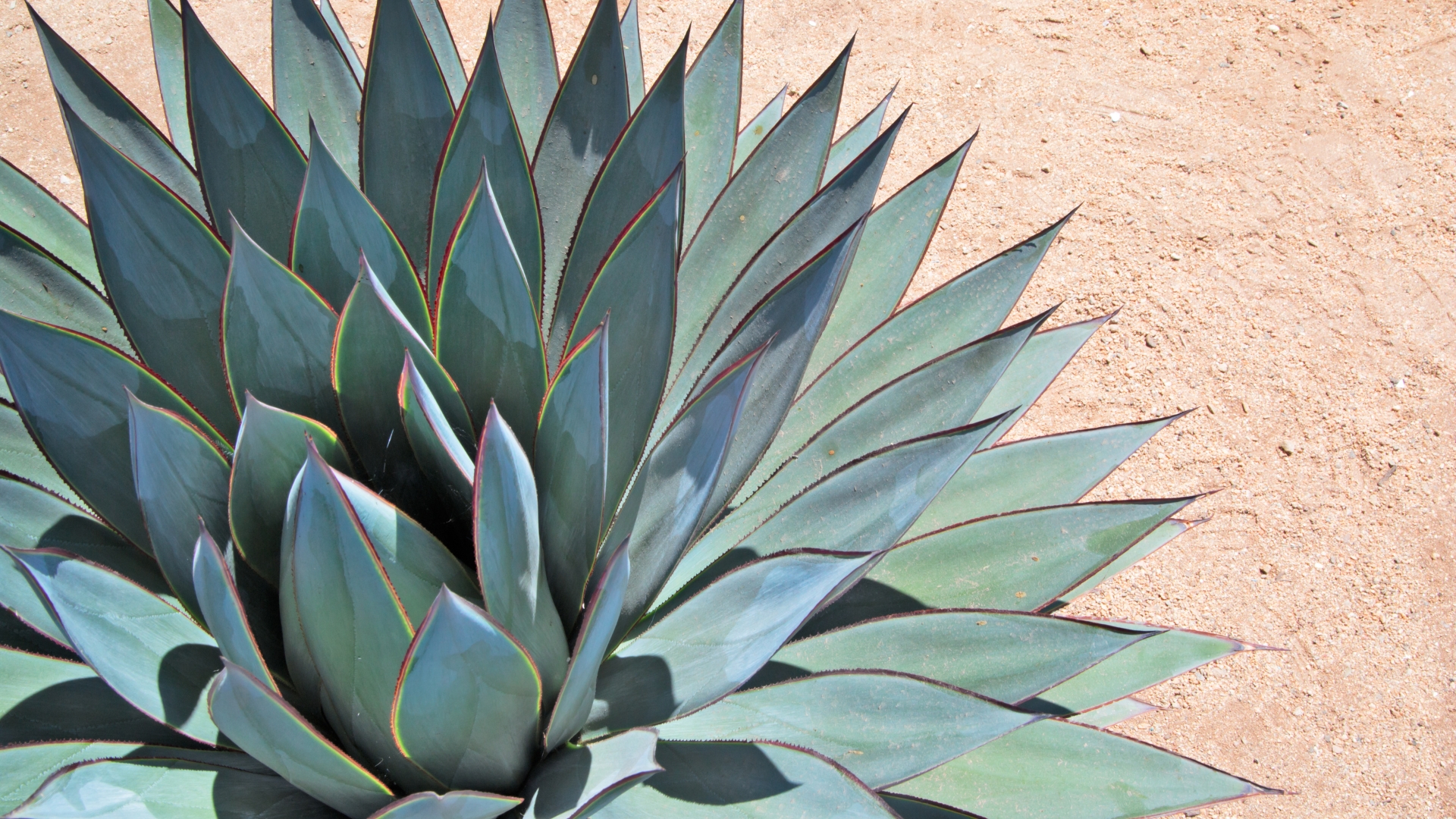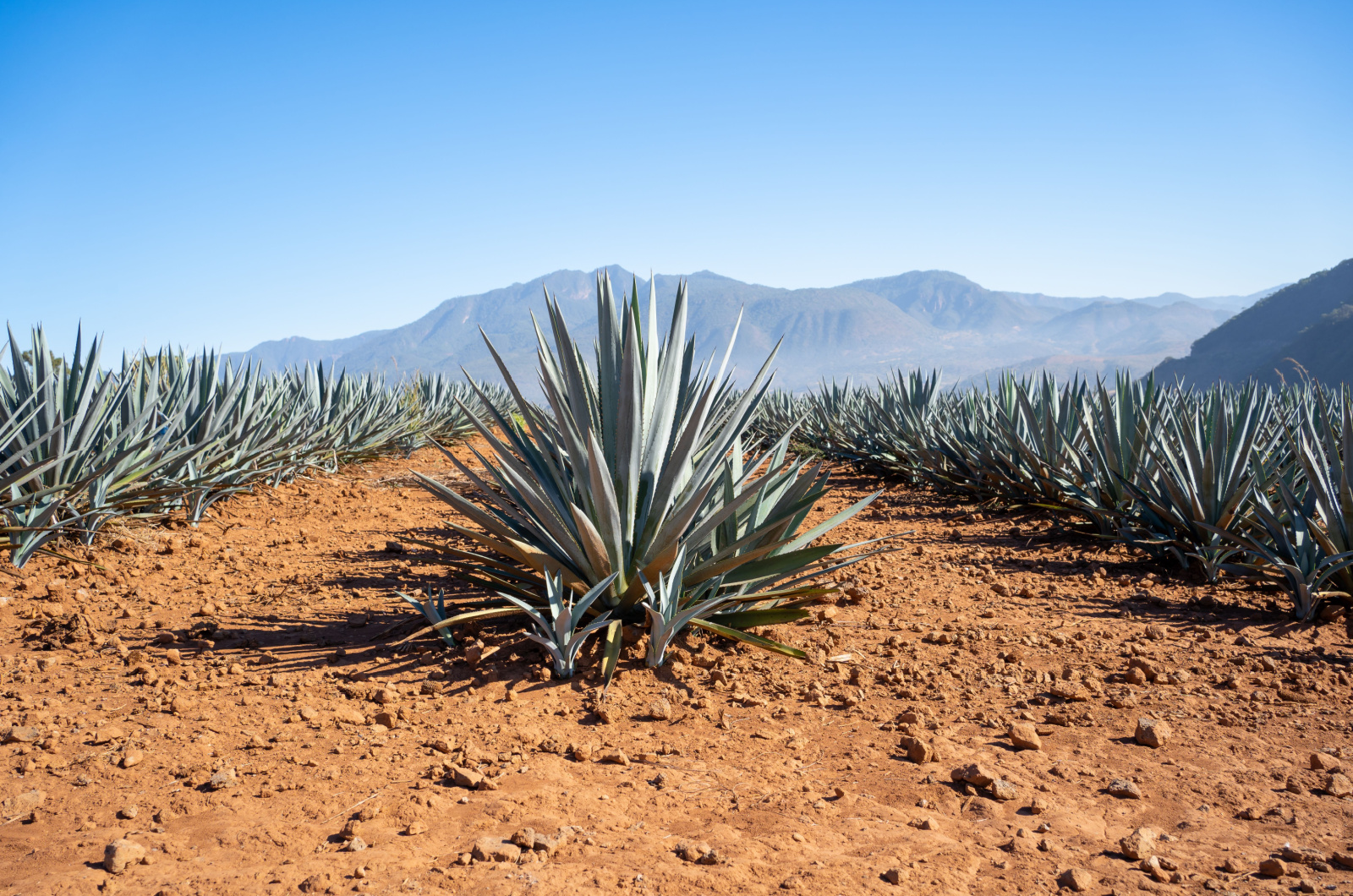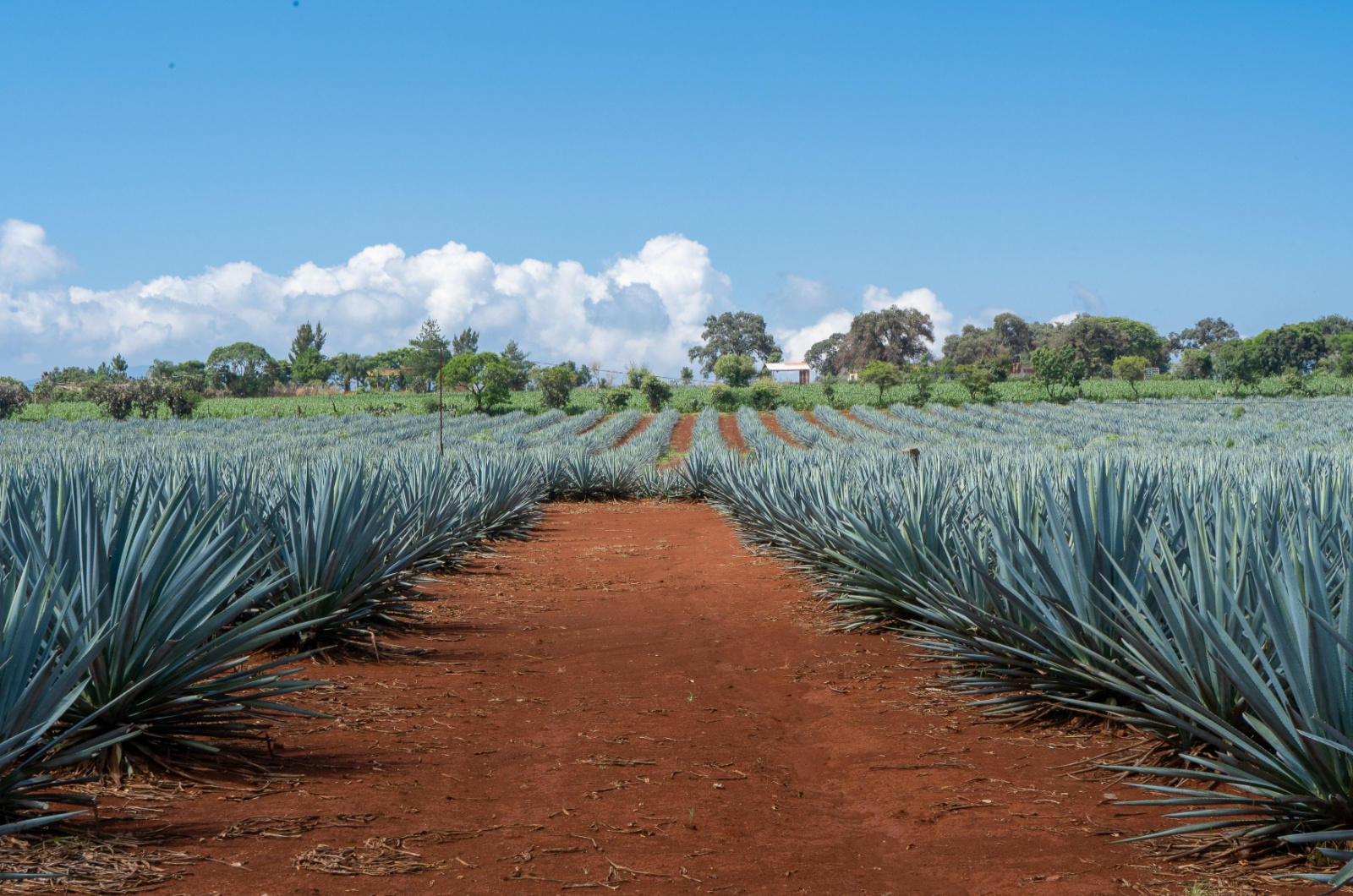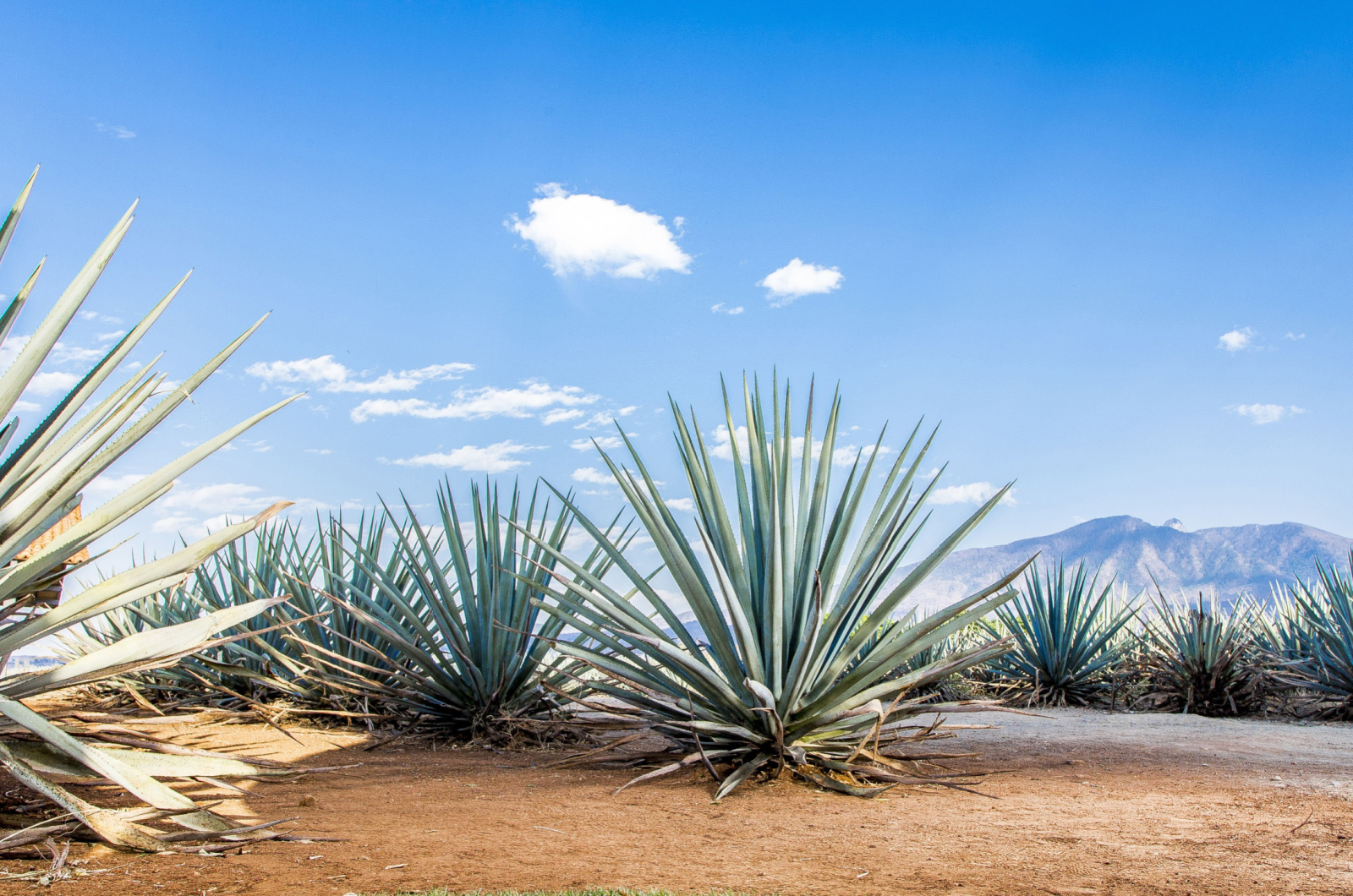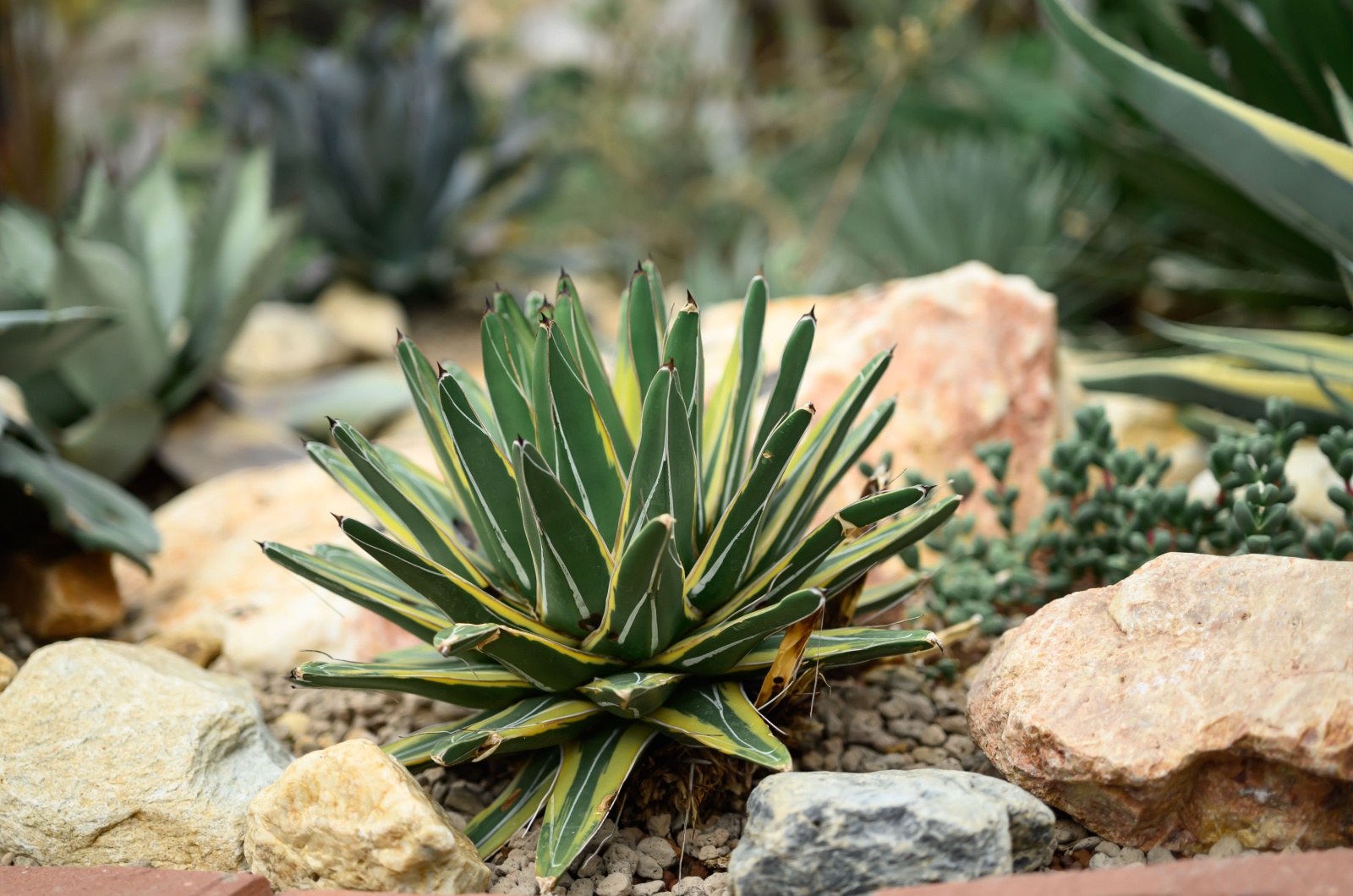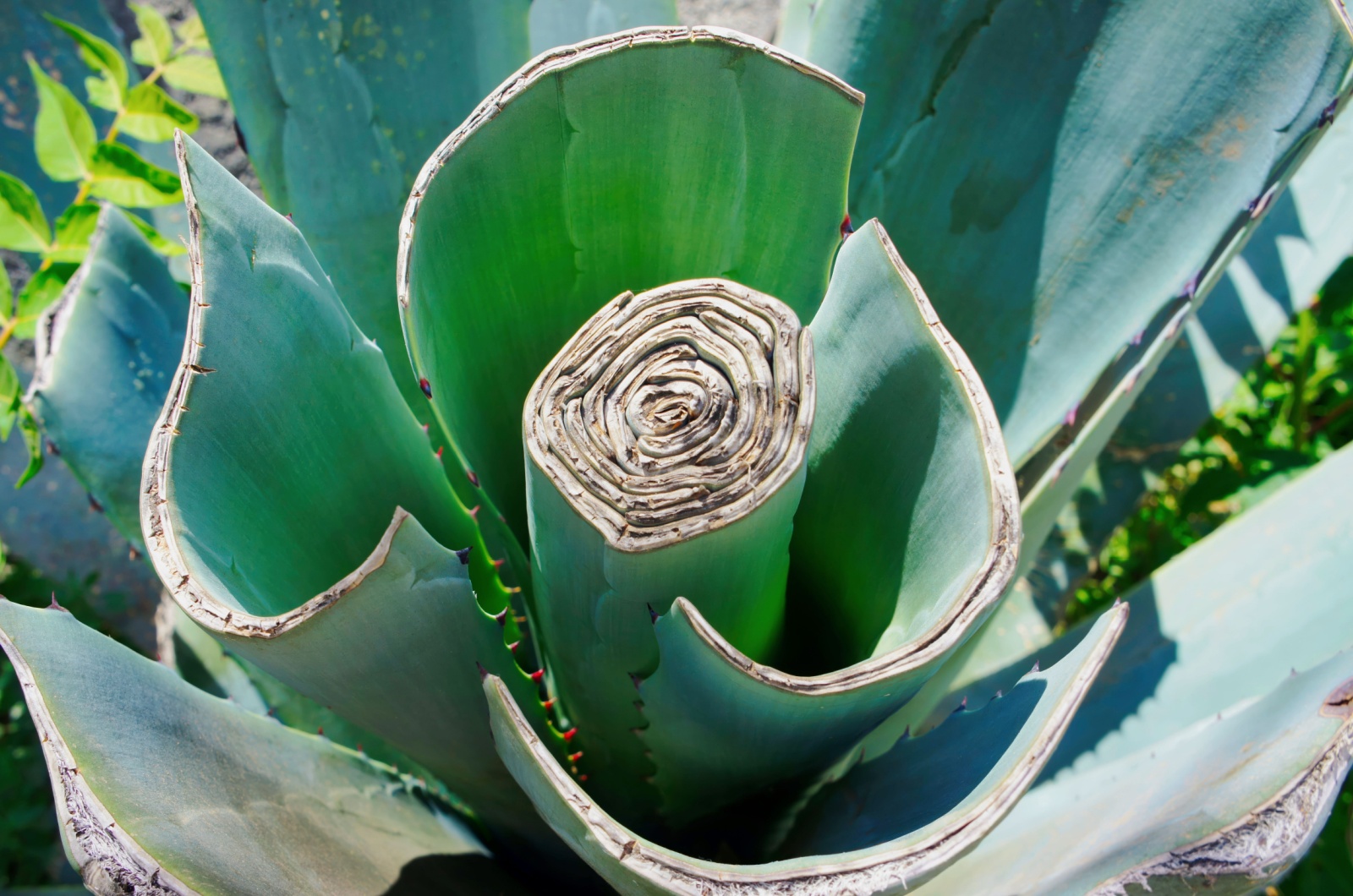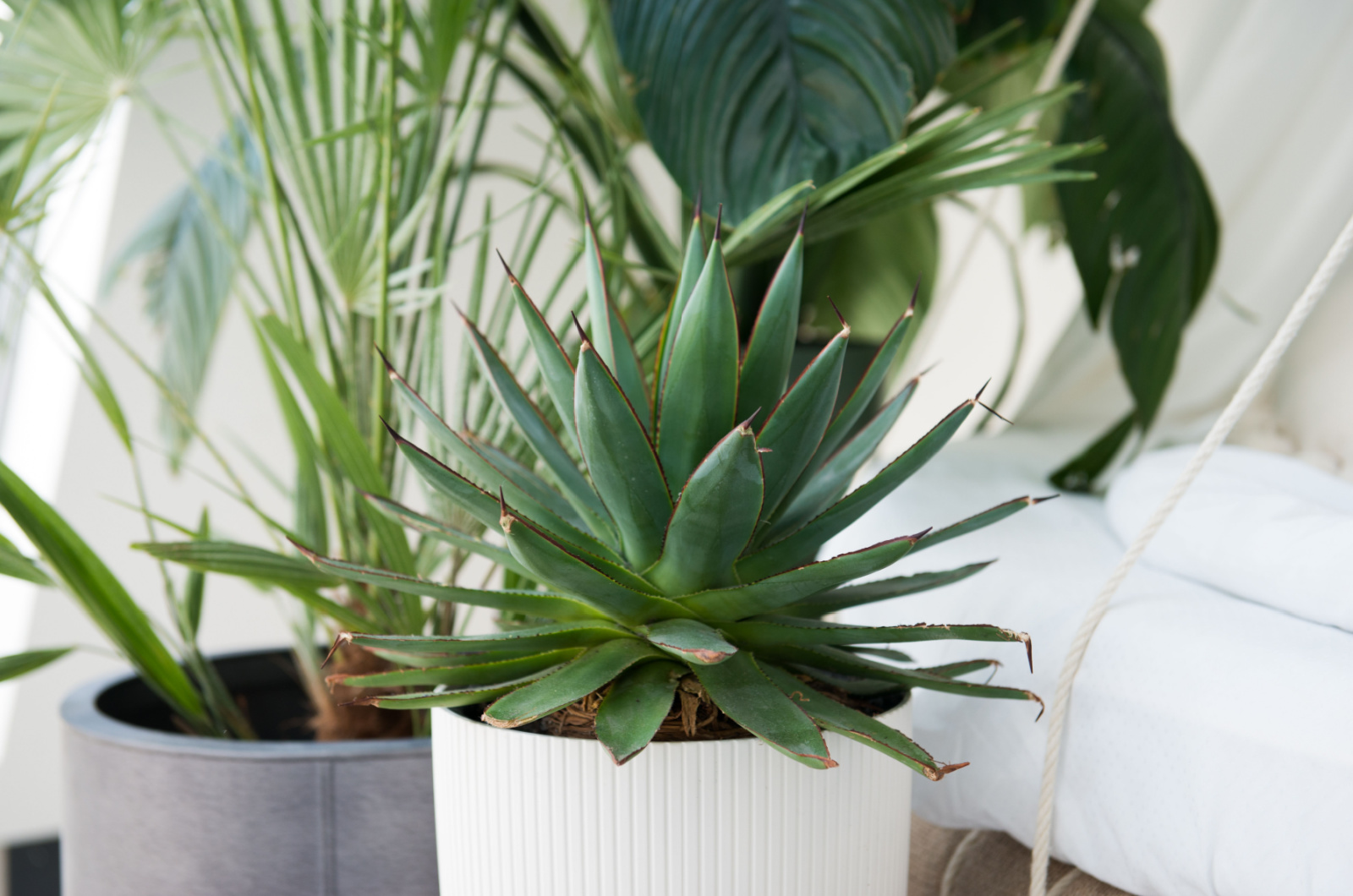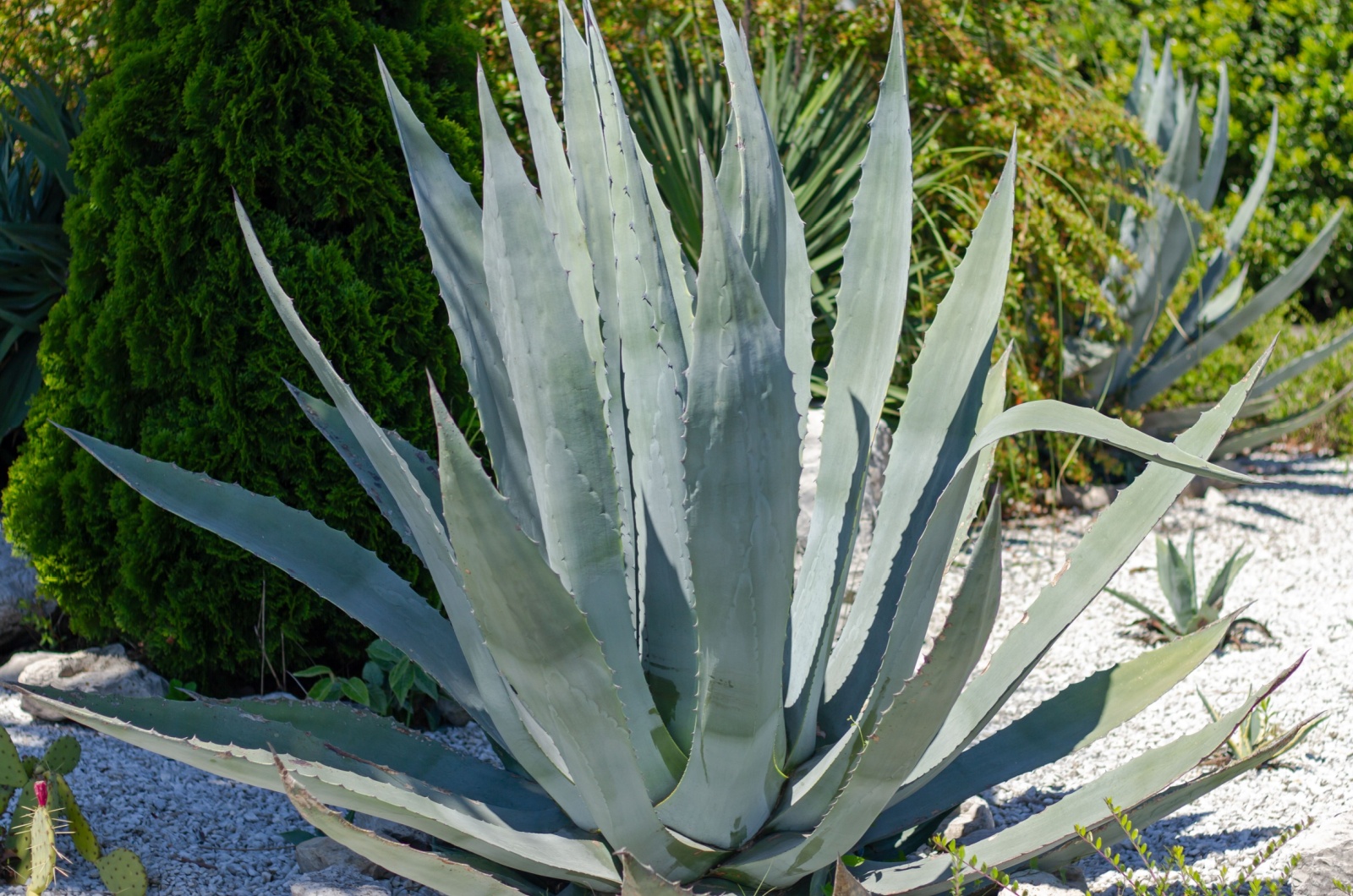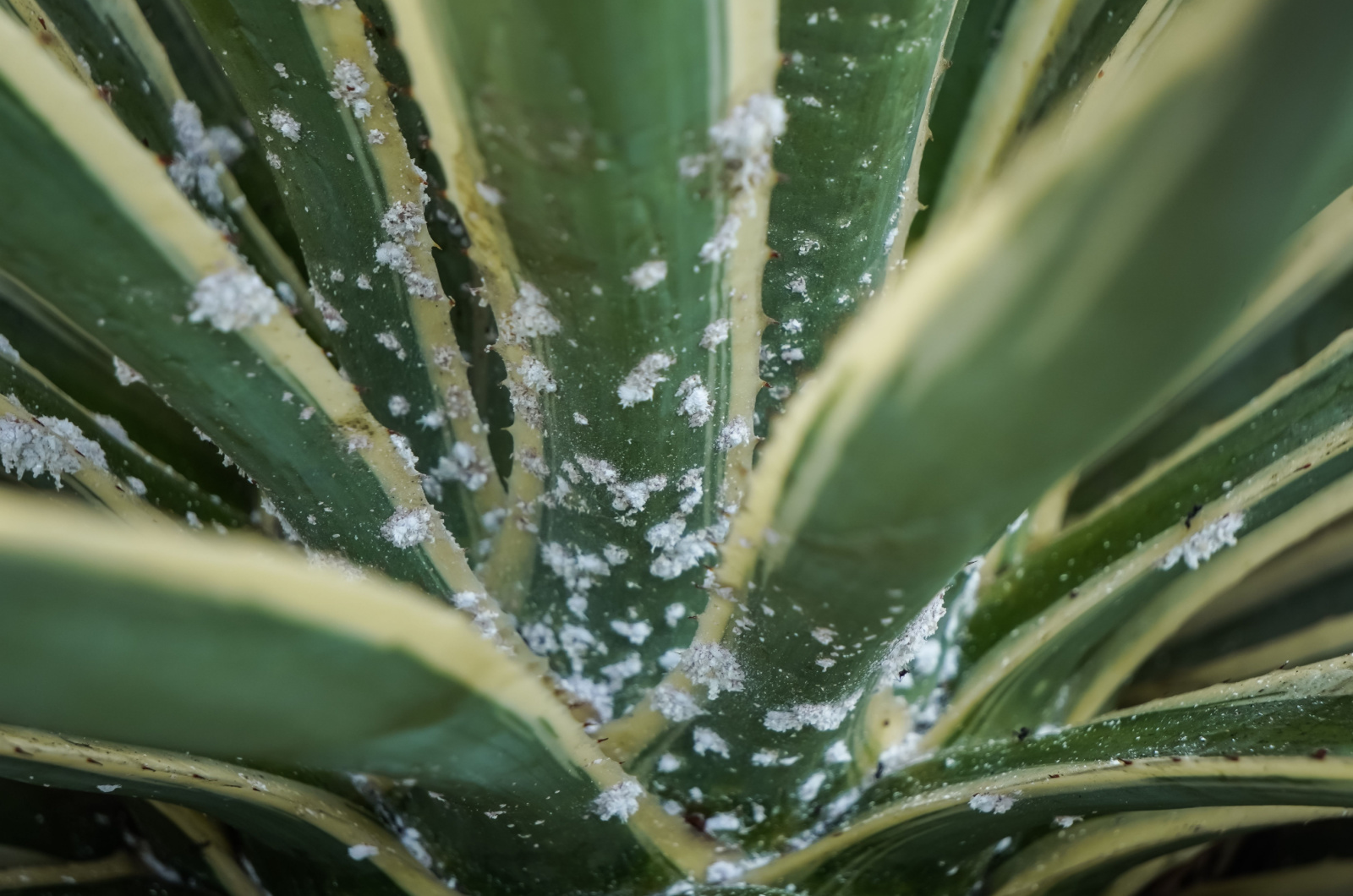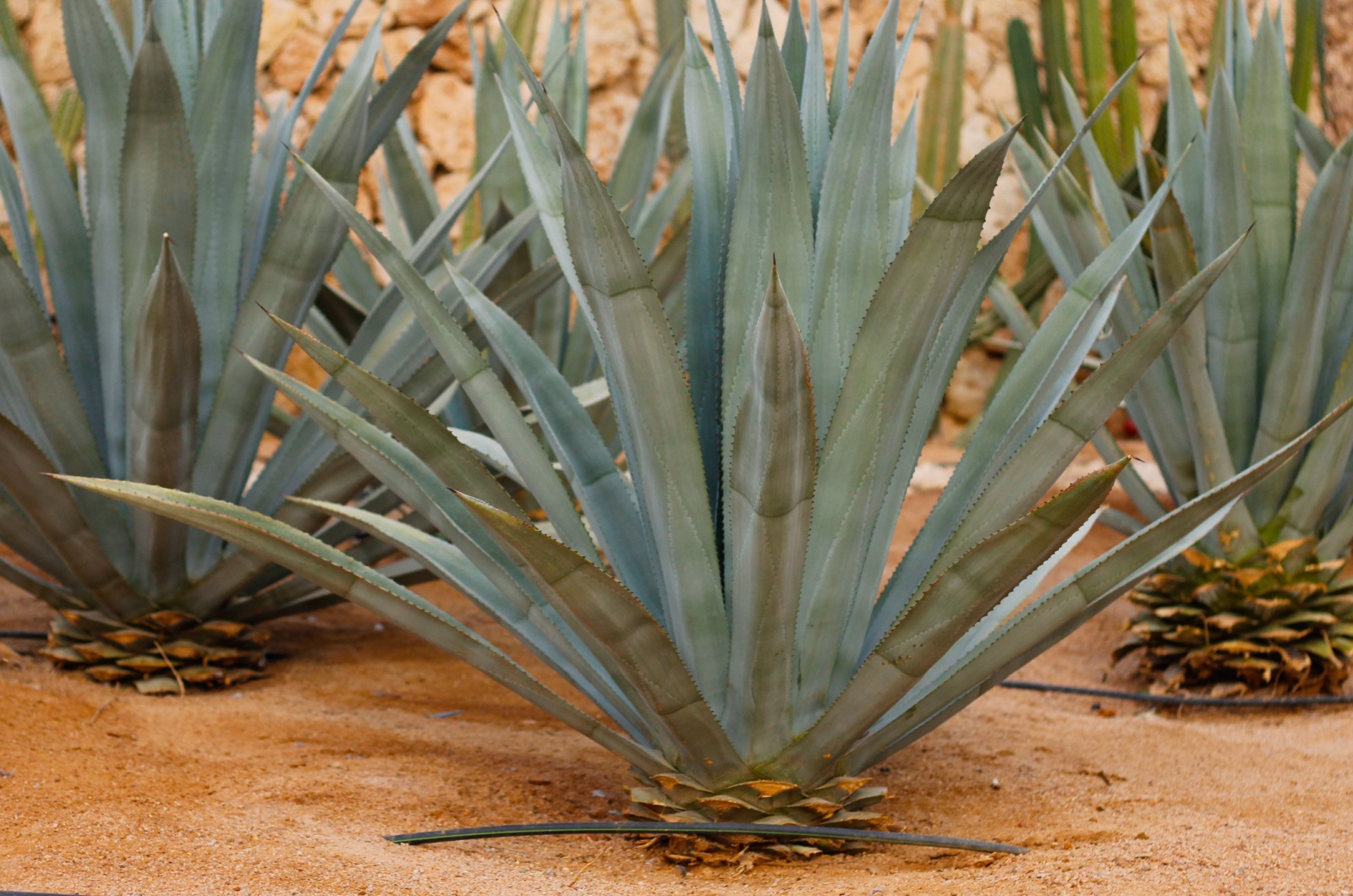We mainly link agave plants to deserts and warm and dry areas of Mexico. You probably know that some varieties of this plant are the main ingredient of tequila, and I’m sure you’ve already tried agave syrup.
Another thing that makes agave special is its appearance, and the rosette-shaped pointy foliage leaves everyone speechless. For this reason, you’ll find this spectacular succulent in many landscapes.
In this article, I’ll show you how to grow and care for an agave plant both indoors and outdoors.
Let’s get started!
More About The Agave Plant
These succulents are adorned with lovely rosette-shaped fleshy and sharp leaves, and some varieties also have spiked edges.
Believe it or not, there are over 200 different varieties of these succulents, with parryi and americana being the most common ones.
The Twisted Tongue variety is a common evergreen perennial grown in the Mid-Atlantic.
The average size of an agave is 5 feet, but there are some smaller varieties that are grown as houseplants.
Interestingly, these plants bloom once in a lifetime but they die as soon as the flowering stage ends. It may take 30 years for an agave plant to generate blooms.
Light
In order to understand the light requirements of agave, we need to take a look at its natural environment. This plant is native to deserts, which means it receives plenty of direct sunlight daily.
Therefore, you’ll need to find a spot for your agave that receives at least 6 hours of full sun daily.
Watering Schedule
Agave is one of the most popular drought-tolerant plants for beginners – that’s one of its best features.
Always wait until the soil dries completely before you water your agave. Remember, the easiest way to kill an agave is to overwater it, so it’s better to wait longer if you’re unsure than to accidentally waterlog the soil.
The signs of a thirsty plant are wrinkling and shriveling leaves.
A rule of thumb is to irrigate your agave twice a month during the summer and once a month during the winter.
The Ideal Soil Type
If you need a plant for a rock garden, agave will do a perfect job. A quick-draining, gritty soil is the key to the healthy development of this succulent.
For container-grown agaves, go with ready potting mixes for succulents for best results.
Alternatively, purchase a standard potting mix and amend it with perlite or pumice to improve drainage.
Temperature And Humidity
Agaves are used to high temperatures, so the warmer the spot you ensure, the better it will grow.
60 degrees Fahrenheit is the lowest temperature an agave can withstand, whereas 90 degrees is the optimal temperature.
If you live in a cooler climate, keep your agave outdoors during the warmer months and move them indoors when temperatures drop.
Pruning
Agaves don’t require any major pruning and they’ll be happy and healthy if you skip this step.
However, you should cut off any damaged, diseased, or discolored agave leaves because they steal energy from the healthy ones.
Of course, you can remove some pups to propagate your agave. Remember to use clean and sharp tools if you’re cutting your agave, no matter the reason.
Tips For Indoor Agave Cultivation
Even though agaves are frequently seen in the wild, they make excellent houseplants. If you ensure the right conditions around the plant, it will thrive and you can enjoy its splendid appearance.
The essential thing is to put your agave in a sunny spot, preferably on a windowsill with southern exposure. Lack of sunlight leads to many issues in agave plants so, if you can’t find a sunny spot, consider investing in artificial lighting.
Tips For Outdoor Agave Cultivation
Desert landscaping is very popular in USDA zones 9 and above, and agave is a perfect plant for this type of design.
Simply select a sunny location and transplant your agave to fast-draining and sandy soil. Transplantation is typically done in March or May but you can do it at other times of the year as long as the temperatures are warm enough.
Pests And Diseases
Another reason why agave and the majority of succulents make great plants for beginners is because of their low susceptibility to pests and diseases.
But watch out for mealybugs and scale because these creatures aren’t very picky when it comes to plants.
Diseases aren’t common in agaves unless you overwater the plants and create an environment for fungi to settle in.
Is Agave Toxic?
Since this succulent is used in many culinary applications, many are surprised to hear that agave is considered a toxic species. (1)
Its raw sap can cause various health issues in both humans and animals, so make sure to keep it away from small children and your furry friends. And be careful about those sharp spines!
An agave is, indeed, a wonderful plant, and its beauty and low care requirements are definitely the main reasons why this species deserves a spot in your indoor or outdoor garden!
References
1. Plants Poisonous to Livestock – Animal Science – Cornell University. (n.d.).

